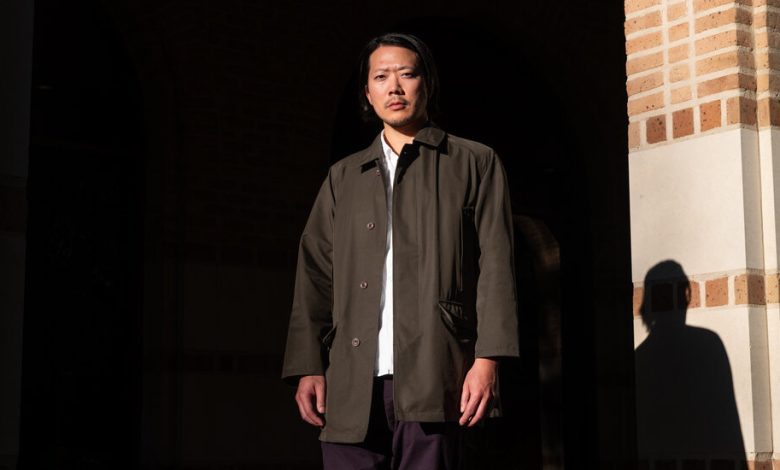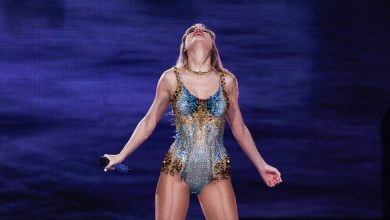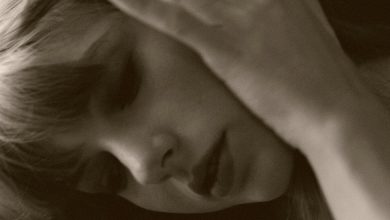The Forgotten History of Chinese Railroad Workers Rises From the Texas Dust

MARFA, Texas — What remains of the Chinese immigrants who built the Southern Pacific Railroad through Seminole Canyon in the 1880s are the objects they left behind — opium pipes, rice bowls, and imperial coins buried here in the scrublands, three hours east of the desert town of Marfa. The laborers, who after brutal hours toiling in the rattlesnake-infested lands would sleep in tents near the tracks, left little of their own writing. (Their white counterparts lodged inside the train cars.)
The artist Kenneth Tam was asked to come here from New York, in December 2021, to explore the canyon’s archaeological sites and piece together a story of the 3,500 laborers. His sculptures of compressed dirt and detritus, horse saddles and leather straps are on exhibit in Ballroom Marfa, a contemporary art space that was once a dance hall. Titled “Tender is the hand which holds the stone of memory,” the exhibition of the sculptures, and a video installation, examine how myths and histories of the American cowboy overlooked the role of Asian Americans in settling the Wild West.
“All we have is fragments of who they were,” Tam said in a recent interview. “The workers were people only understood through a question of their raw economic value: How much labor could they do? I was interested in rehumanizing them.”
The exhibition is a departure for Tam, 40, whose art often captures the awkward interactions between masculinity and fragility found at social gatherings like college frat parties. As a Chinese American artist raised by a father obsessed with television westerns, the little-known stories of immigrant railroad workers resonated with him and encouraged him to dig deeper into the history of Chinese people in the United States.
“There is a larger discussion here of how Asian Americans are represented in history and popular culture,” Tam said. He pointed to a sculpture named “Dear Mother,” composed of broken doll parts, a safety whistle and other fragments that he wedged into a dissected saddle. A spotlight against the sculpture cast a humanlike shadow on the gallery wall behind it. “I wanted to take an iconographic object like the saddle and create something more sensuous by cutting and revealing its shape.”
Inviting the artist into the desert was the idea of Ballroom Marfa’s new director, Daisy Nam, who said her vision for the small museum as it approaches its 20th anniversary this year is to become a “research laboratory” for those unafraid of Marfa’s arid climate and spotty internet — or the legacy of the town’s benefactor, the artist Donald Judd (1928-94).
“There is a magic to being so remote and disconnected,” said Nam, whose mandate in curating the organization’s programming was to make it more like a community hub than an outpost for art world elites.
“The artists we commission make site-responsive work,” Nam explained. “Some engage with the flora and fauna. Some engage with the night sky, which is one of the darkest in the country. Others are surprised by the heavy amounts of surveillance around the town by border control.”
Searching through local records in Marfa, Tam and a fellow artist, Wong Kit Yi, found some evidence that laborers may have settled in town after finishing work on the railroad. Documents from the early 1900s mention a Chinese restaurant and an annual town report includes mention of a recipe book.
But the region was also the site of violent outbursts against the immigrants. In January 1882, 11 Chinese railroad workers in a town outside El Paso were murdered by white colleagues who disguised themselves as Native Americans. According to Shelley Fisher Fishkin, a Stanford University professor who researches the lives of these workers, it was just one example of the hardships faced by Asian laborers in Texas.
Food was one of the few things that poor migrant workers brought with them to the railroads, introducing the region to ginseng and jujube. Some also buried imperial coins in the dirt to conjure good fortunes. Tam combined these two themes in three circular floor sculptures that resemble large coins embedded with dried vegetables such as seaweed, mushrooms and roots. The sculptures have titles like “Why do you abuse me,” or “Why did you strike me,” which come from a book of English-language phrases given to Chinese laborers who were traveling abroad in the 1800s.
Raised in Little Neck, a suburb of Queens, N.Y., Tam described his childhood as something out of the television show “The Wonder Years,” wholesome if dull. His father worked in the hospitality industry while his mother worked in human resources at the United Nations. “Art was something I stumbled onto by taking a comic book drawing class at the local art supplies store.” He attended The Cooper Union and studied under the sculptor Walid Raad. Friends said he was quiet, and he called himself “a real shop rat” who wore Carhartt construction clothes and spent most of his time in the studio experimenting with industrial design. Then his practice shifted to video performance in graduate school at the University of Southern California.
“I worked with people I met off Craigslist,” Tam said, explaining that he would film his “unrehearsed and absurd” interactions with these strangers, often paying them a few hundred dollars for their participation. One early work featured Tam practicing sex positions with a woman while they were fully clothed; another had him sitting at a stranger’s family dinner.
Writing in The New York Times in December 2020 about Tam’s performances, the art critic Dawn Chan described him as “a freewheeling and slightly sadistic improv teacher bent on pushing everyone out of their comfort zone.”
That playful edge enticed leaders at the Queens Museum to commission the artist to create “Silent Spikes,” the film included in the Ballroom Marfa exhibition. The movie features Asian men dressed as cowboys who gyrate for the camera as though they were throwing lassos and riding horses. Slowing down these images, Tam highlights the sensuality of his subjects and dismantles the rugged archetype of the American cowboy.
“Ken is an artist with the capacity to weave together historical references and contemporary urges when it comes to looking at masculinity,” said Sally Tallant, director of the Queens Museum. “He finds the right language.”
His preoccupation with how male bodies “perform within certain rituals and coded activities” was inspired by female artists like Marina Abramovic, Adrian Piper and Patty Chang, who questioned value systems around gender. He said he was less interested in following the male bravado of performance artists like Chris Burden, who had himself shot for the sake of art, and Vito Acconci.
“Artists like Burden and Acconci were always testing the limits of what a body could endure,” Tam said. “I felt like I could never do that kind of work, because I never thought of myself as wanting to prove anything through my own adversity.”
This adversity is reflected in the cowboy artworks, which were made against the backdrop of Covid-19. Tam’s own experiences with fighting anti-Asian discrimination during the pandemic — when leaders like former President Donald J. Trump called Covid-19 the “Chinese virus” — drove him to think more deeply about his own identity. During a surge in violence against Asian Americans last year, he helped found Stop DiscriminAsian, a coalition of artists and cultural workers using their skills to raise awareness and prevent racial hatred.
Young Chung, a dealer representing Tam through the Los Angeles gallery Commonwealth and Council, said the artist’s shy personality belies the gutsy risks he takes. “Within his own work, he becomes a visual marker of difference needing to be engaged.” According to the gallery, the majority of Tam’s buyers are museums. Videos have a smaller market than other mediums, so the artist supplements his income with teaching gigs. Recently, he became an assistant professor in the visual and dramatic arts department at Rice University in Houston.
And now that he calls Texas home, Tam feels a responsibility to help ensure that the full story of how the Chinese railroad workers is told.
“It’s not just a simple question of representation and reinserting these Chinese immigrants back into the Western narrative,” Tam said. “It’s not about filling the void, but making the void felt.”
Tender is the hand which holds the stone of memory
Through May 7, Ballroom Marfa, 108 East San Antonio Street, Marfa, Texas; ballroommarfa.org.



